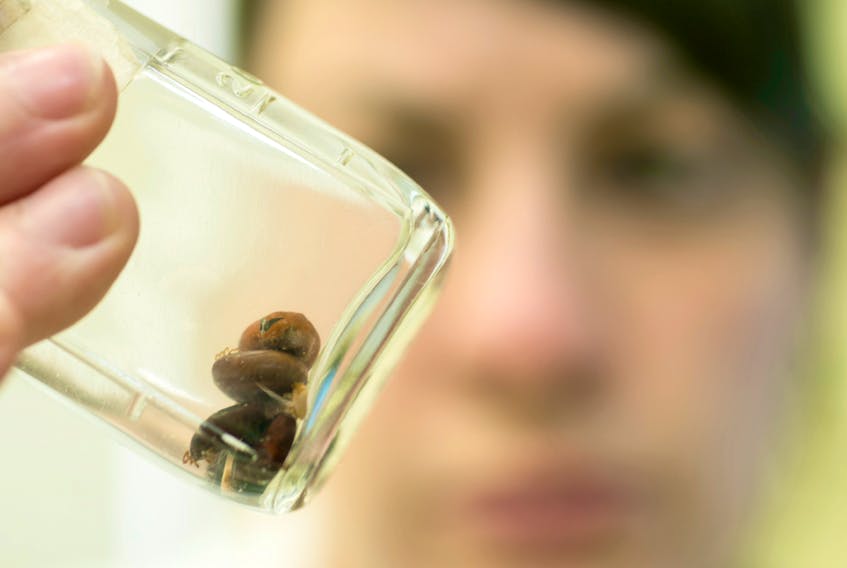TRURO, N.S. – Warm fall weather has caused for a late peak in tick season around the province.
While they would usually begin settling down for the winter, warm days heading into November have allowed blacklegged ticks to stay active longer than usual, extending their active season by more than a month.
“It’s been a great year for ticks, but maybe not so good for people,” said Andrew Hebda, zoologist for the Nova Scotia Museum.
“Normally we tend to get a petering out of tick referrals around the beginning of October, but we are still getting as many referrals as we were at the beginning of September.”
Referrals are tick specimens brought to the museum or forwarded to them for identification purposes from the public or medical and veterinary clinics.
Most of the ticks they receive are either unfed or in the larva stage, but this year things have been different.
“Over the last few weeks, we have been getting ticks that have been feeding for at least a few days. Whether it is new people going out into the field or if people aren’t checking quite as frequently that is allowing them to feed this long is unknown,” said Hebda.
Although the extended tick season puts people at risk for more exposure to blacklegged ticks, the only species of tick in Nova Scotia known to carry Lyme disease, Hebda stresses that exposure to a tick is no reason to panic.
“Doing normal tick checks is your most powerful tool to prevent Lyme disease,” he said.
“The main point to remember is to not panic if you do find a tick on you. It takes them a while to get into the feeding position, but if they are and they’re infected, it takes a while for them to transmit the disease.”
Hebda also said getting bit by a tick does not mean you have Lyme disease, as not every tick is a blacklegged tick, nor does every blacklegged tick carry the disease.
A chart on the Department of Health and Wellness site shows a layout of areas at risk for Lyme disease across the province, and while Colchester County is at a moderate risk for the disease, people in Pictou, Halifax and Yarmouth have a much higher risk of contracting it.
Not every tick feeds on its host either, Hebda said.
“The adult males won’t feed. They will climb up a suitable host they believe a female will latch onto, and when a female shows up they will detach and mate, using their host almost like a singles bar,” he said.
While ticks tend to slow down around this time of year, they don’t fully go away and can even become active during the winter if the ground temperature reaches above 4ºC.
“They have a natural anti-freeze in them, so they will hang out in the leaf litter during the winter in grassy or wooded areas,” said Hebda.
“Usually during a normal winter, we have a sharp freeze and a layer of ground frost that stays throughout the season, but as soon as the temperature gets above 4ºC, they become active again. We’ve gotten referrals as early as January or February.”
It’s hard to say whether ticks will be more active this winter as we continue through an oddly warm fall, but as long as people check themselves for ticks or tick bites, there is no reason for worry, Hebda said.
“They are just trying to make a living and will continue to try and make a living. The warm weather will not make them more aggressive or change their behaviour,” he said.
“If their active season happens to be 300 days over 240 days, it’s just another 60 days for them to feed and for us to possibly interact with them.”









